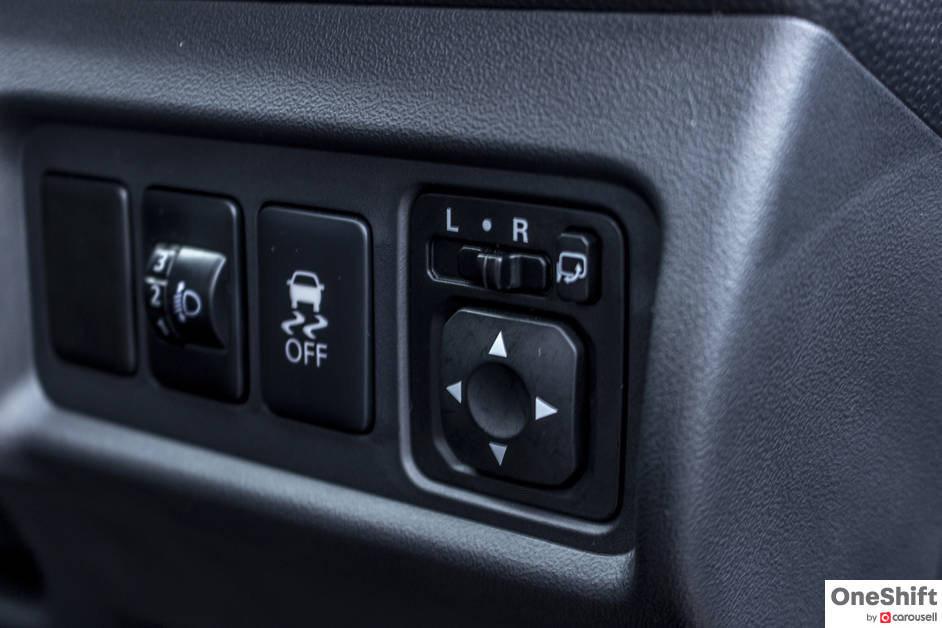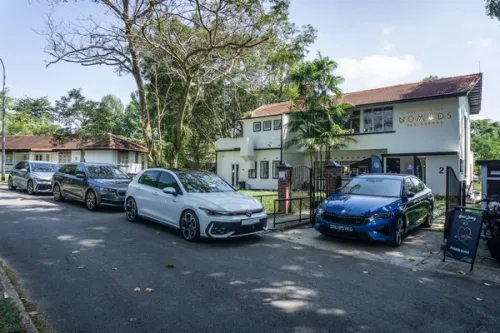The Mechanics Behind Common Driving Assists
Just a decade ago, clever driving assists were the reserve of the fastest and most expensive vehicles. They allow mere mortals (we're definitely in that bunch!) to pull off some scarcely-believable lap times pounding round a track, more than making up for the years of karting and junior formula racing that most of us lack.

Just a decade ago, clever driving assists were the reserve of the fastest and most expensive vehicles. They allow mere mortals (we're definitely in that bunch!) to pull off some scarcely-believable lap times pounding round a track, more than making up for the years of karting and junior formula racing that most of us lack.
With OEMs eventually jumping on the bandwagon and developing their own systems, pricing eventually came down to the point that you'd be able to find a suite of driving assists in even the most bargain basement of new cars.
Driving assists themselves have uses far beyond the track though. They offer a safety net even on the road, especially when the conditions are grim, or when a momentary lapse of concentration results in a potential loss of control. But just how do they work?
Application of these systems may have once been limited to the most exclusive of performance and luxury vehicles, but competition has led to lowered prices and widespread adoption. These are:

Modern systems use a host of sensors to detect when a wheel is about to lock, easing off brake pressure automatically. This brake pulsating translates into more controlled braking, for shorter stopping distances on tarmac.
In higher spec cars though, the systems have advanced to the point that they are able to send different brake pressures to each corner of the vehicle to ensure a more ruthless arresting of speed. The system, which has been dubbed Electronic Brakeforce Distribution, can adjust brake bias in real time, altering the handling characteristics of the vehicle.

This system helps ensure your car is pointed in the correct direction every time. It uses a combination of data derived from yaw sensors, wheel speed sensors, and steering input, to work out the intended path of travel, versus where the car is actually headed towards.
It then applies individual brakes to regain traction and control of the vehicle. Some systems also cut engine power momentarily.

Traction control helps to match wheelspeed and throttle input, to the grip available to the car's tyres. This system typically uses sensors from the Stability Control and ABS components.

It functions by scrubbing speed of a wheel that is rotating at a high speed as compared to the other wheels on the vehicle. This can be achieved by using the brakes, or by reducing drive to the wheels. The latter can be achieved by reducing fuel and spark availability to multiple cylinders, blow off valve opening in turbocharged vehicles, and a reduction of electricity to the motor in EVs.

This system utilises a mixture of LIDAR and cameras to continuously monitor the road for hazards ahead. When it detects an impending collision, the system is first activated not by means of brake application, but by visual and auditory warnings to the driver.
Should the driver, possibly in a distracted state, not react to the warnings, it then applies the brakes to rapid shed speed to prevent a crash.
Hill Start Assist systems work by holding the brake for you as you transition from the car in an idling state, to you actually applying some power. Traditionally, you'll have to either balance the vehicle by means of the handbrake or by left foot braking as your vehicle will roll backwards in that few seconds when you aren't on the brakes nor are applying power.
Hill Descent Control works by applying the brakes individually and automatically to maintain consistent traction as you head down a steep incline.
As with the 5 assists mentioned above, these new driver aids are still prohibitive expensive to use in mass-market vehicles. You can expect a gradual decline in the cost of the hardware and software to eventually lead to automakers fitting these pieces of technology as standard to even their most affordable offerings. They are as follows:
Launch Control makes sure you get the best launch off-the-line everytime. It calculates the precise amount of wheelspin needed for the most rapid acceleration on the surface you are on, and then translates that into the most ideal part of the powerband for that purpose. In cars equipped with the system, you typically engage it by pressing a button, then putting your right foot on the throttle, and left foot on the brake, building the revs up, before releasing the brake pedal come launch time.
Performance cars have had this for a while now, but early adopters suffered from premature gearbox wear-and-tear, so do use with caution!
This assist probably has more use in day-to-day driving than Launch Control. Adaptive cruise control works by maintaining your speed and distance to the car ahead of you, accelerating and braking on your behalf to make sure you remain at a pre-set speed and at a safe distance ahead.
Audi and BMW, have even hooked up their system with their built-in GPS modules. It uses cloud data to adjust the car's gearing or throttle input to keep it in an ideal part of the powerband for optimal responsiveness and fuel economy.
In plain speak, this system works by the momentary cutoff of engine power to the wheels in a bid to increase grip to the front end of the vehicle. Sensors detect when steering input is applied at speed, and the computers temporarily halt ignition to create the aforementioned end result.
This brief disruption of power happens in milliseconds, with weight being transferred forwards, pushing the tyres harder into the tarmac for more grip. Another added bonus of this little gadget, is that our brains can pick up on the slight nose dive, and recalibrate ourselves to better anticipate for changes of direction. This system helps create a more engaging drive for the driver, whilst at the same time, ensuring passengers are comfortable even when the car is on more spirited excursions!

All driving assists essentially do only one thing - manipulate power and grip levels, and keep them within pre-defined safe and acceptable parameters. This optimisation of traction in less ideal scenarios may not come as second nature to those of us that haven't had the luxury spending of both time and money on some quality seat time on the track and in more advanced simulator setups.
These systems work, with global statistics showing a significant reduction of collisions after the mandating of them. Regardless of whether you'd like to channel your inner Lewis Hamilton, or prefer a more relaxed drive with plenty of safety nets built-in, there is a car for anyone, at any budget, in ! New listings are added daily, and our reputable partners mean you'll never have an unsatisfactory car buying, or selling with our SwiftQuote application, experience!

Credits: Jek Ray Low


Get the Best Price for your used car
from 500+ dealers in 24 hours

- Convenient and Hassle-Free
- Consumer Protection
Transparent Process
With No Obligation








